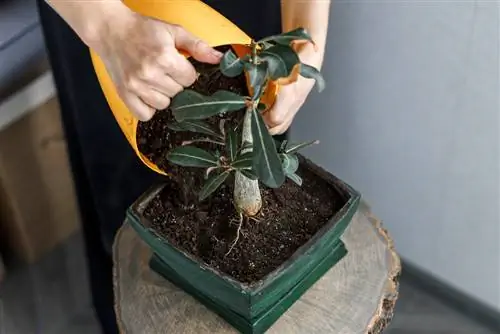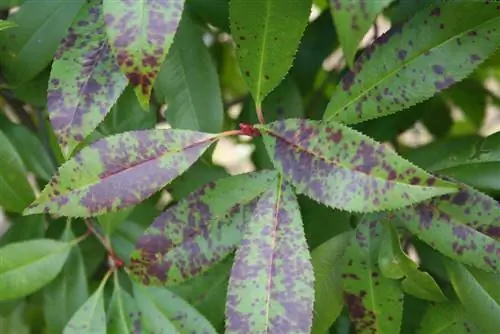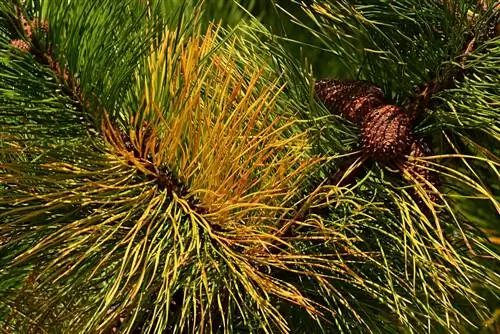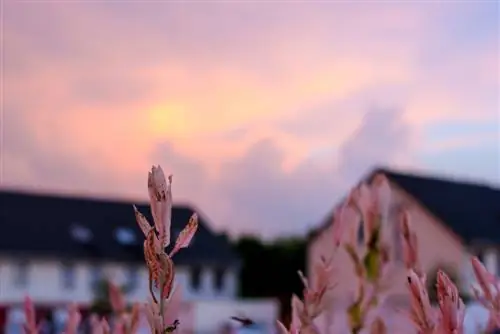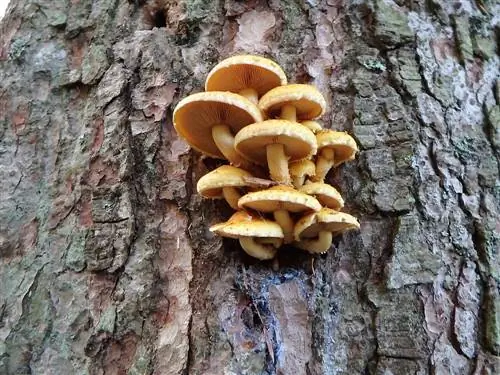- Author admin [email protected].
- Public 2023-12-16 16:46.
- Last modified 2025-01-23 11:22.
Fungi can affect different areas of trees. They also cause damage to bonsai and attack roots, shoots or leaves. Their spores spread through the air and often survive in the soil until growing conditions are favorable.
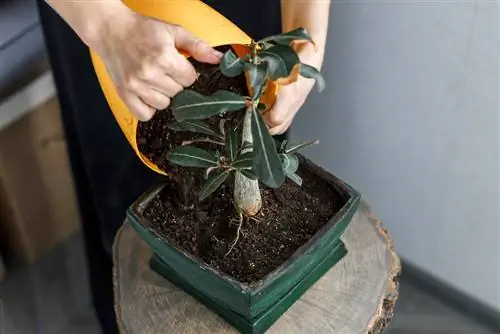
How do you fix fungus on a bonsai?
If fungus attacks on bonsai, you should adjust the substrate, water correctly, remove affected leaves and, if necessary, use sulfur-based fungicides. Avoid waterlogging, excessive fertilization and ensure optimal site conditions.
Root rot
The roots need a well-loose substrate in which sufficient ventilation is guaranteed. It must be able to store water and nutrients without tending to become waterlogged or compacted. The right substrate mixture is the basis for he althy growth.
If the composition is not right, the growing conditions will worsen with every irrigation. As a result, the fine roots die and become mushy. They offer an optimal breeding ground for fungal spores that are naturally found in the soil. The hobby gardener usually notices signs when root rot has progressed. It shows itself in brown to black leaf spots.
Factors that promote fungal infestation:
- excessive supply of fertilizers
- heavy watering with the risk of waterlogging
- compacted substrate due to incorrect composition
Mix substrate
Every bonsai has its own requirements for the plant substrate. With a self-made universal mixture, you can create good starting conditions for he althy growth for most trees. Mix one part each of land soil, mineral substrate and coconut fiber. Depending on the plant's needs, you can vary the proportions or add humus.
Watering correctly
As soon as the substrate surface has dried, first moisten the soil carefully with a shower head. If the water has seeped away, water thoroughly until it drips out of the drainage holes. With this method you ensure that the entire soil is soaked. Immersing the bowl in a water bath is recommended in emergency situations when the soil has dried out extremely and has become very compacted so that the irrigation water runs off the surface.
White coating on the substrate
A permanently moist surface provides a breeding ground for mold, which appears as white grass. Since this can have a negative effect on plant growth, you should replace the soil and plant the mini tree in fresh substrate. Clean the bowl with hot water.
Tip
Not every soil fungus is dangerous. Special mycorrhizal fungi enter into a symbiosis with trees and provide them with additional nutrients.
Mold grass on leaves
Powdery mildew manifests itself as a mealy coating on the leaves. Its fungal mycelium penetrates the plant tissue so that it dies in severe infestation. Older trees usually survive illness without any problems. It is enough if you remove the affected leaves and ensure optimal site conditions.
Young trees suffer more because they first have to develop a strong crown. A rapid spread of the fungal lawns can lead to complete defoliation and spread to the soft shoots. Treatment with sulfur-based fungicides (€11.00 at Amazon) is the last resort to destroy the fungus.

